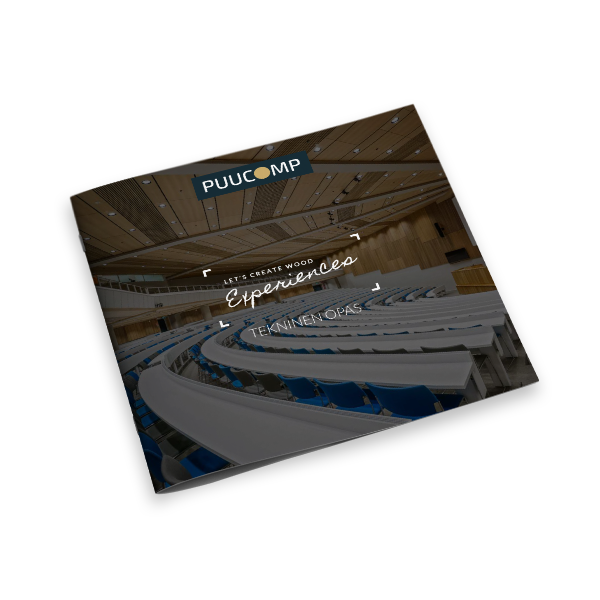Fire classifications
Interior panels and laths
Materials fulfilling the most demanding fire classes
In public spaces where many people gather to meet, the importance of fire safety accentuates. Naturally, the fire classes required of materials are also more stringent. We test our solutions thoroughly. For example, the fire classes of our panels have been tested by Eurofins Expert Services. We can therefore offer products with the highest fire classifications on the market.
Depending on the fire safety requirements of a space, different weightings have to be considered when choosing materials. One option is to use a fibreboard as background material for spaces with the highest fire classification needs. MDF, on the other hand, is a lighter alternative to fibreboard. In addition to lightness, MDF has the advantages of easier perforability and flexibility. If the architect has drawn curved forms in the building, the materials also need to flex. This allows deviations from the fire classifications on certain surfaces. Our architect service has a solid understanding of the challenges of different spaces and the fire safety of surface materials - we can help you find the most suitable solution for your project.
General fire classes and classification criteria for surface panels and materials
Fire Classes
Building materials are divided into classes depending on how they influence the ignition of fire, the spread of fire, and the production of smoke. EN standards are used as test methods and for classification. Fire classification for building products is made according to classification standard EN 13501-1.
The main classes for building materials (excluding flooring) are described using the following symbols: A1, A2, B, C, D, E, F.
Additional classes
Smoke generation and formation of droplets is expressed using the additional classification s and d. The classification of smoke production is s1, s2, s3 and of formation of droplets d0, d1, d2.
Fire testing methods in fire classification
The results of the test methods for the main fire classes, EN ISO 1182 (non-combustibility) and EN ISO 1716 (calorific value), are not dependent on the way the product is installed and fixed.
In Puucomp Architect Service we truly know surface materials and the fire safety requirements they have for public spaces.
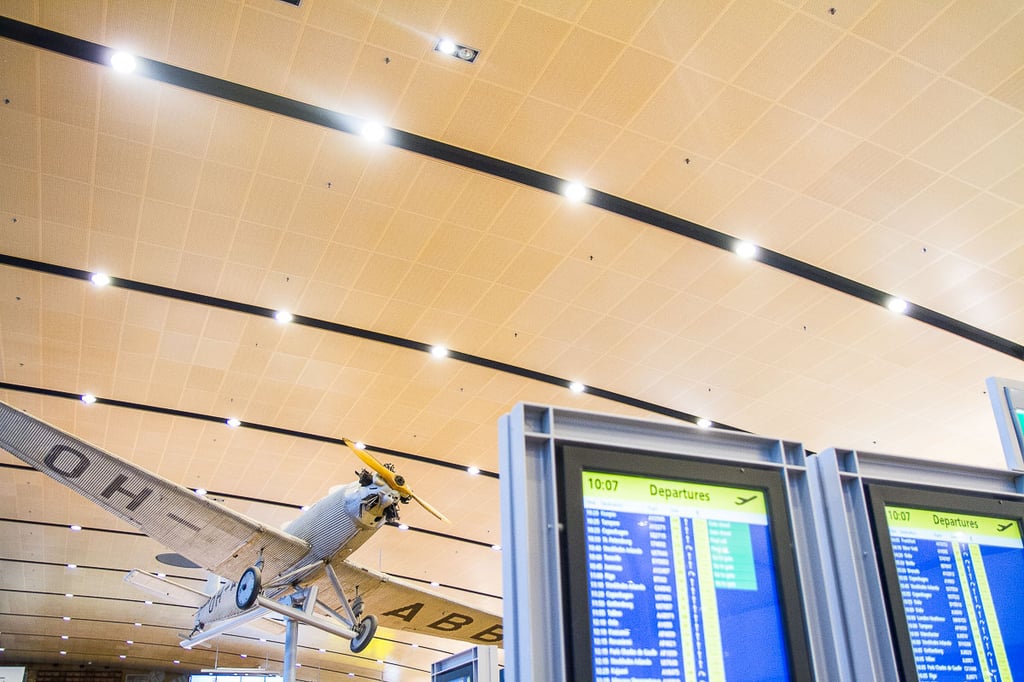
Interior cladding panels and lath elements with a wood veneer surface complying with fire class A2 or B
- The most common fire safety requirement for cladding materials in public spaces is currently at least level B-s1, d0, or even A2-s1, d0, both of which can be achieved with modern products.
- Puucomp interior panels meet the most demanding fire safety requirements. All Puucomp solutions are tested as a whole by VTT and Eurofins Expert Services Oy, which means that the tested and documented fire classification also includes the mounting solution.
- The ultra-safe, practically non-combustible A2 fire-rated veneer interior cladding panel is a High Tech solution developed by Puucomp for demanding use cases. However, for many sites, the interior cladding panel that meets the B fire class with a remarkably low fire impact is still a suitable solution.
- An interior cladding panel of fire class A2-s1, d0 with excellent fire resistance is required, for example, for the interior surfaces of building escape routes and stairwells. It is also available from Puucomp in wood veneer.
- The ArborLine A2 lath element also meets the most demanding fire safety regulations.
Most used Puucomp solutions and fire classifications
Depending on the use case there's a variety of solutions to choose from. Here are the most common of those.
- Fire class B-s1, d0 - veneered Puucomp cladding panel with gypsum fibre core
- Fire class A2-s1, d0 - veneered Puucomp cladding panel with gypsum fibre core
- Fire class D-s2, d0 - veneered Puucomp cladding panel with MDF core
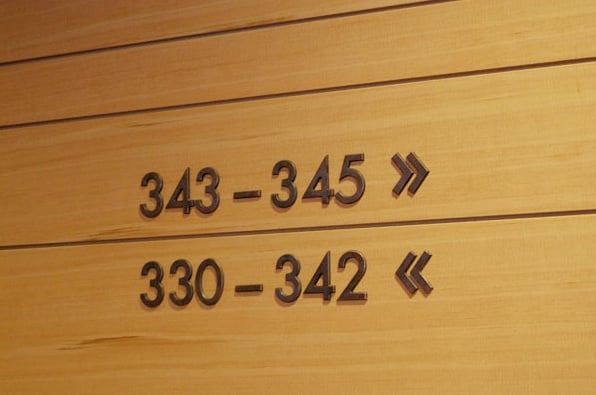
A veneered interior panel that fulfills the demanding A2 classification
The super-safe, practically incombustible veneered interior panel in the A2 fire class is a high-tech solution developed first in Finland by Puucomp to meet the needs of demanding use.
The fire class A2-s1, d0 indicates excellent fire resistance and these kinds of panels are required in such places as the interior surfaces of building exits and stairwells.
Puucomp A2-s1, d0 -fire classification means that:
- A2 = Will contribute to the fire to an extremely limited extent.
- s1 = The smoke production is limited.
- d0 = No flaming droplets or particles
occur.
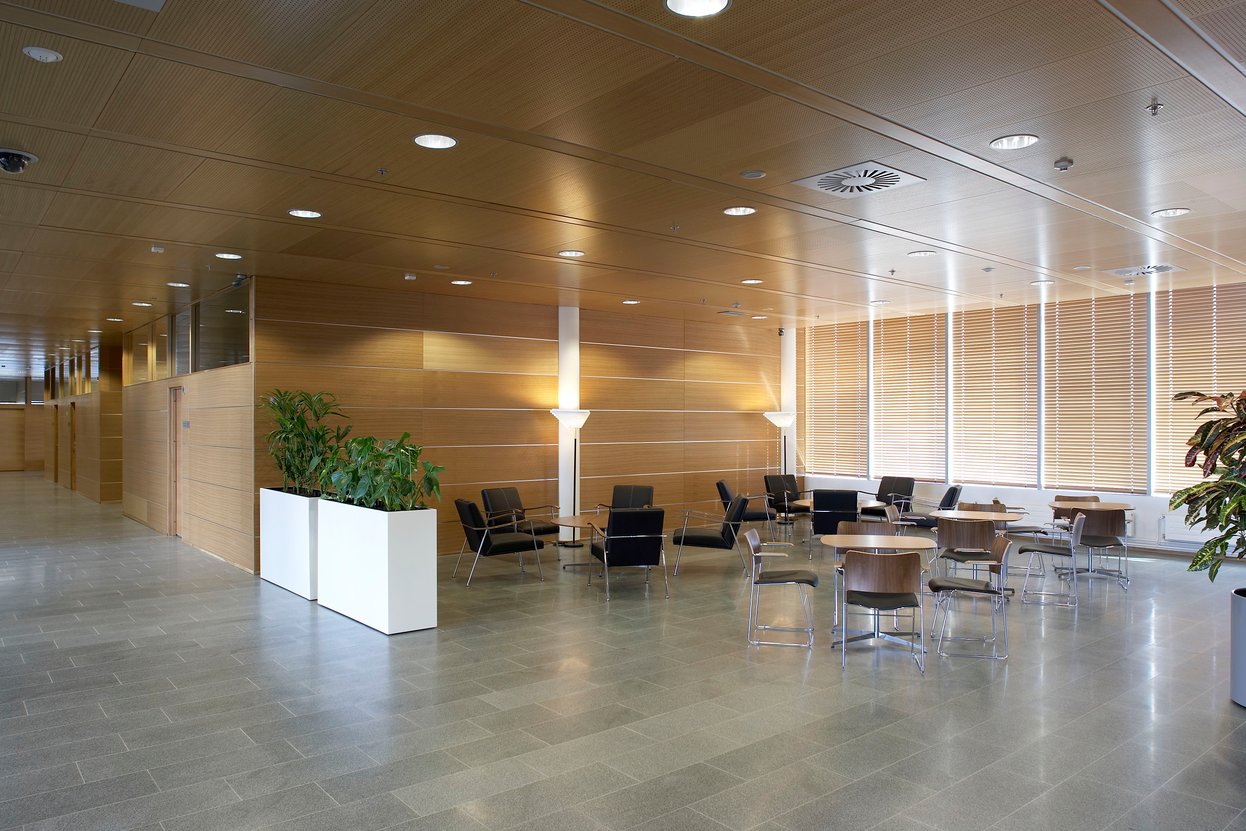
Interior panel fulfilling fire class B demands
For many spaces, an interior panel in the B fire class is the right solution. In conventional use, an interior panel in the B fire class only has a small effect on the development of a fire.
Puucomp interior panel B-s1, d0 -fire classification means:
- B = Contributes to the fire to a very limited extent.
- s1 = The smoke production is limited.
- d0 = No flaming droplets or particles occur.
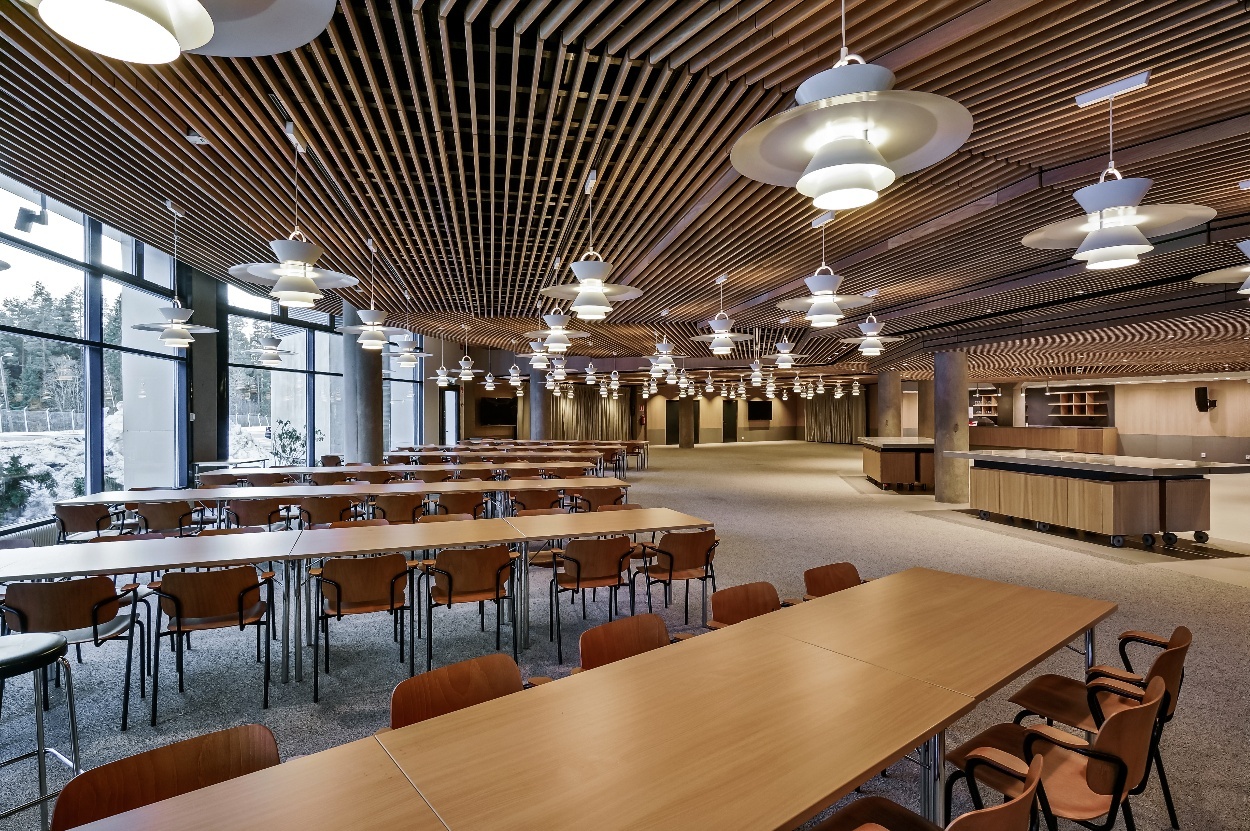
ArborLine lath solutions
Lath elements are good solutions also regarding fire safety. A2- lath element can achieve A2-s1, d0 -level fire classification.
ArborLine laths fire classes
- Massive with flame resistant finish C-s1, d0
- A2-lath fire class: A2-s1, d0 or B-s1, d0
- Plank panel fire class: A2-s1, d0 or B-s1, d0 - with MDF core D-s2, d0
- Flame proof ArborLine Massive lath elements can also be made as curved surfaces.
PUUCOMP - PREMIUM WOOD EXPERIENCES
With Puucomp's advanced surface solutions, you can bring the authentic feel of wood to public spaces - in a fire-safe way. You are free to come up with ideas - we will find a high-quality solution for you. Oy Puucomp Ab - Nordic manufacturer and pioneer of surface materials since 1987. We also implement solutions that have never been done before.
